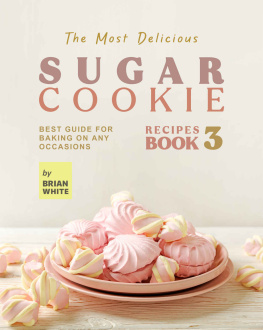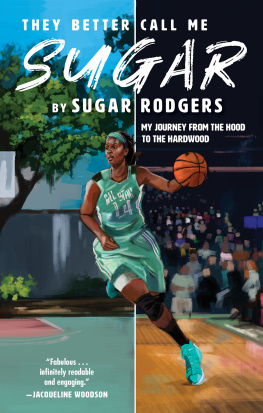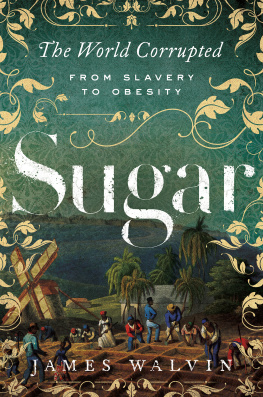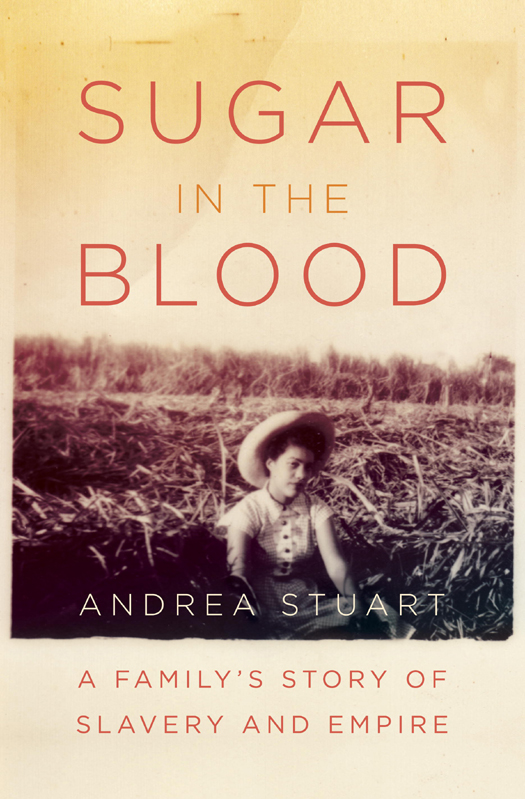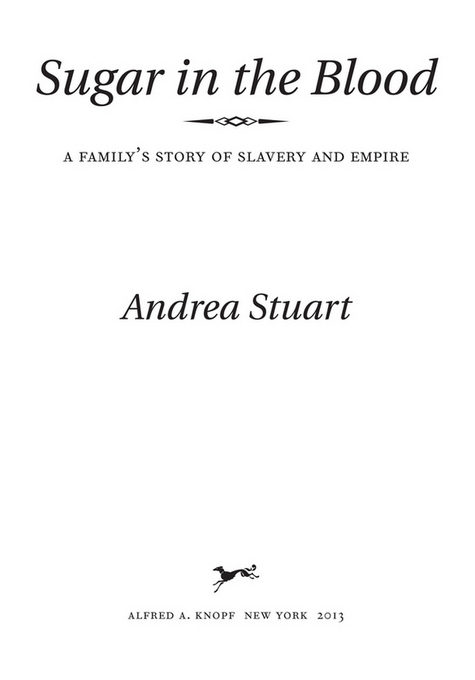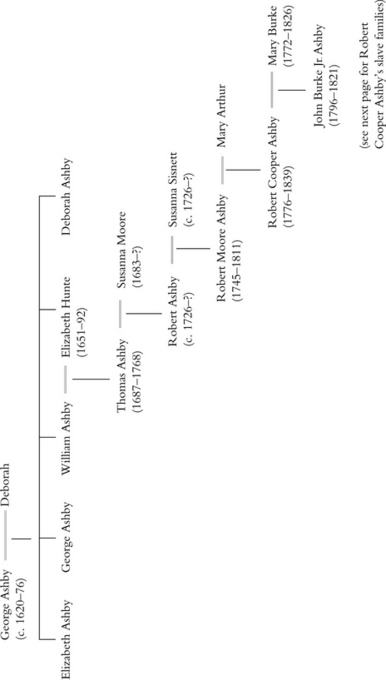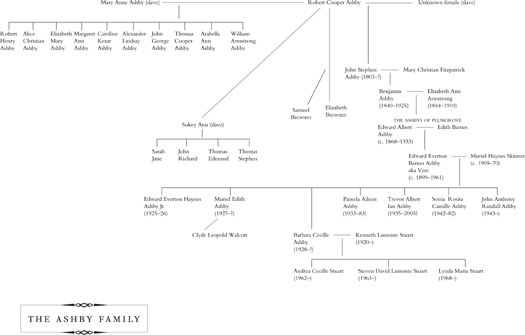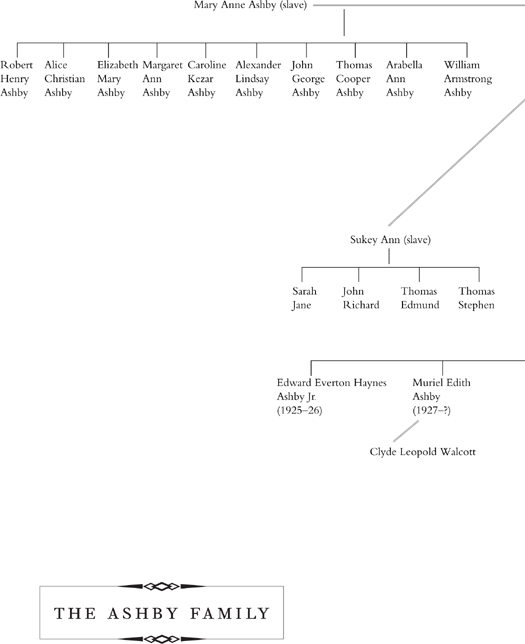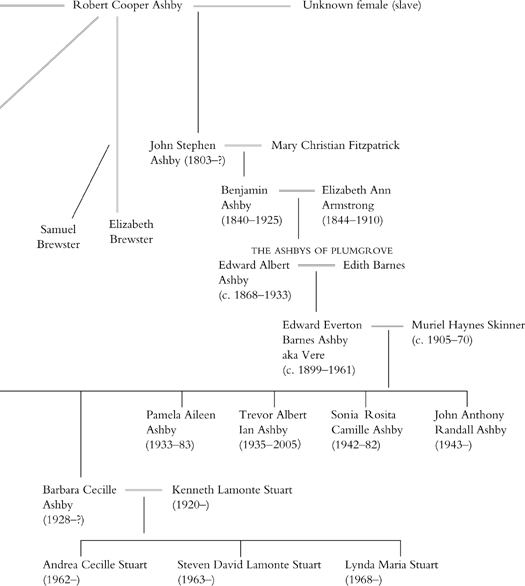THIS IS A BORZOI BOOK
PUBLISHED BY ALFRED A. KNOPF
Copyright 2012 by Andrea Stuart
All rights reserved. Published in the United States by Alfred A. Knopf, a division of Random House, Inc., New York, and in Canada by Random House of Canada Limited, Toronto.
www.aaknopf.com
Originally published, in somewhat different form, in hardcover in Great Britain by Portobello Books, London, in 2012.
Knopf, Borzoi Books, and the colophon are registered trademarks of Random House, Inc.
Library of Congress Cataloging-in-Publication Data
Stuart, Andrea.
Sugar in the blood : a familys story of slavery and empire / Andrea Stuart.1st ed.
p. cm.
Originally published: London: Portobello Books, 2012.
Includes bibliographical references.
eISBN: 978-0-307-96115-0
1. Sugar tradeBarbadosHistory. 2. Sugarcane industryBarbadosHistory. 3. SlaveryBarbadosHistory. 4. Stuart family. 5. BarbadosHistory. I. Title.
HD 9114. B 32 S 78 2013 338.17361092272981dc2 2012034259
Front-of-jacket photograph courtesy of the author
Jacket design by Emily Mahon
Map by Leslie Robinson and Vera Brice
v3.1
For my uncle, Trevor Ashby,
whose stories started it all
The past is not dead. In fact, its not even past.
WILLIAM FAULKNER
Contents
Illustrations
A Corvette, a Brigantine and a Barque, from West India Vessels of the Close of the Seventeenth Century, English School, 20th century (Private Collection/The Bridgeman Art Library).
A Prospect of Bridge Town in Barbados, Samuel Copen, engraving by Johannes Kip, 1695 (Private Collection/The Bridgeman Art Library).
Richard Ligons map of Barbados, 1657 (courtesy of The Barbados Museum and Historical Society).
Barbadoes Mulatto Girl, Agostino Brunias, 1765 (courtesy of The Barbados Museum and Historical Society).
Sugar cane (courtesy of The Barbados Museum and Historical Society).
Sir Henry Morgan at Porto Bello, lithograph by Howard Pyle, 1887 (Private Collection/Peter Newark Pictures/The Bridgeman Art Library).
A Representation of the Sugar-Cane and the Art of Making Sugar, from Universal Magazine, 1749 (Private Collection/The Bridgeman Art Library).
Photograph of Drax Hall, 1980 (courtesy of The Barbados Museum and Historical Society).
Portrait assumed to be of Robert Cooper Ashby (courtesy of John Knox).
Title page of a pamphlet calling for the emancipation of African slaves, 1776 (Private Collection/Peter Newark American Pictures/The Bridgeman Art Library).
Robert Cooper Ashbys will (courtesy of Andrea Ramsey).
Sukey Anns certificate of manumission, 1832 (courtesy of Andrea Ramsey).
Photograph of Edith Ashby (from the authors family album).
Photograph of Skipper, Henrietta, and Wilfred Ashby (from the authors family album).
Photograph of Edward Everton Barnes Ashby (from the authors family album).
Photograph of Muriel Haynes Skinner (from the authors family album).
Photograph of Barbara Cecille Ashby (from the authors family album).
Photograph of Kenneth Lamonte Stuart (from the authors family album).
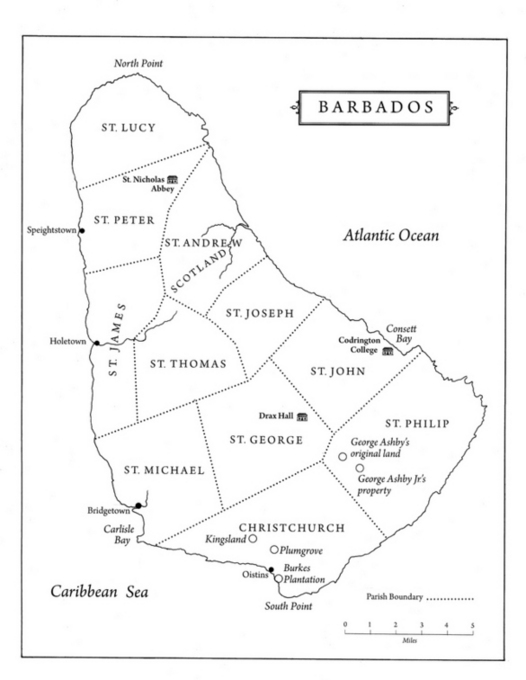
Preface
My family is just one of millions across the globe that were forged by sugar and slavery. And so my chronicle has echoes across the Americas as far away as Australia and the Indian Ocean. Virtually all our stories began the same way: some English or European migrant abandoned the Old World for the New, eventually to become enriched by the production of sugar, which became known as white gold. During this process, their bloodlines inevitably became intermingled with that of the slaves imported to farm and service this new economy. Yet, despite the ubiquity of this tale, I could not recollect a non-fiction book that tried to tell it; one which explored how the epic forces of sugar, slavery and settlement made and shaped the life experiences of our ancestors, and our world today. So I have written that book myself.
The narrative of the book is organized around the particular genealogy of the Ashby family, my maternal ancestors. It begins with my first identifiable ancestor and continues to the present day. This approach caused me some heartache, since it has meant focusing the initial section of the story largely around its white progenitors, whose experience is definitively documented. That doesnt feel comfortable, but it allows a more representative story to be told, since the Caribbean was a European world in the early years of settlement, with blacks in the minority for several decades. And this methodology also demonstrates a fundamental truth about the regions families, which overwhelmingly started as ethnically white and over time became predominantly black.
So, historical veracity triumphed. But that has meant that my African ancestors do not enter the picture until they are confirmed on the family tree. The unknowability of their past is one of the many terrible by-products of slavery, when people, reduced to chattels, are written out of history and deprived of a personal past. Ghosts haunt this tale, small men whose lives leave only very faint footprints and slaves whose sufferings leave no mark at all. My debt of honour has been to try to reconstruct their stories, black and white, and bring them to vivid life, using the scraps and fragments of information available to me. In doing so, I have been very aware of the tensions between helping stories to be told without abusing the limitations of historical record, and allowing myself to interpret and comment while acknowledging the silences of the undocumented past.
The completion of Sugar in the Blood would not have been possible without the support and encouragement of a great number of people. My first debt is to my editor, Laura Barber, whose passion for the book, unfailing encouragement and editorial prowess have made this the book it is; and then to everyone else at Portobello for producing and publicizing it with such enthusiasm and energy. In America I am grateful to Sonny Mehtas team at Knopf, with a special mention to Diana Coglianese, for taking this project to their hearts and backing it so unequivocally. My wonderful agent, Clare Alexander, got this project immediately and went in to bat for it with panache and passion. My profound gratitude also goes to the Wingate Foundation, without whose financial support this book could not have been written.
My research has taken me on interesting journeys. In Barbados, where much of my primary research was undertaken, I was met with great kindness. My dear friend Alissandra Cummins, director of the Barbados Museum, has been invaluable: introducing me to the right people, tracking down useful sources, recommending useful texts. Huge thanks are due to Robert Morris and my newly discovered cousin John Knox, who have guided me through the maze of Ashby-related sources, and whose unstinting generosity with their research, time and superior local knowledge have been invaluable. Thanks are also due to Sir Hilary Beckles, Dr. Pedro Welch, Dr. Karl Watson and Dr. Tara Iniss, who in different ways have contributed to this project. Cynthia Cummerbatch and Patricia Stafford both shared their precious work with me. The library staff at the Barbados Museum and the Barbados Archives were always patient and helpful. In England I particularly wish to thank Bill Schwarz at Queen Mary, University of London, for his vital input in thinking through the research process. Staff at the London Library were always willing to help me source material, and I would like to thank the Athenaeum for granting access to their collection of pamphlets on the slave trade.



